The best iPhone is obviously going to be different for everyone and really depends on your needs and budget. With the launch of the iPhone 14 series, Apple now sells eight different models that range in price from $429 for the iPhone SE (2022) to $1,599 for an iPhone 14 Pro Max with 1TB of storage. Those costs can be further subsidized down if you happen to be trading in an earlier iPhone or can get a good iPhone 14 deal from a wireless carrier.
The eight iPhone variants Apple currently sells are a mix of new models and phones that date back to 2020. Below are the various models, their release date, the number of rear cameras they have, their processor and their current list price, which for some phones includes a $30 activation fee that’s waived if you activate your iPhone on a carrier at the time of purchase.
Current iPhones, compared
| Model | US starting price | Screen size | No. of rear cameras | CPU | Release date |
|---|---|---|---|---|---|
| iPhone SE | $429 | 4.7 inches | 1 | A15 Bionic | March 2022 |
| iPhone 12 | $629 | 6.1 inches | 2 | A14 Bionic | October 2020 |
| iPhone 13 Mini | $629 | 5.4 inches | 2 | A15 Bionic | September 2021 |
| iPhone 13 | $729 | 6.1 inches | 2 | A15 Bionic | September 2021 |
| iPhone 14 | $829 | 6.1 inches | 2 | A15 Bionic | September 2022 |
| iPhone 14 Plus | $929 | 6.7 inches | 2 | A15 Bionic | October 2022 |
| iPhone 14 Pro | $999 | 6.1 inches | 3 | A16 Bionic | September 2022 |
| iPhone 14 Pro Max | $1,099 | 6.7 inches | 3 | A16 Bionic | September 2022 |
But whether it’s the tiny iPhone 13 Mini and its 5.4-inch screen or the 2020 iPhone 12, you actually have a lot to consider to find your perfect phone. Navigating Apple’s iPhone spectrum can be overwhelming, whether you’re considering colors (the iPhone 13 comes in six), or features like the iPhone 14 Pro’s Dynamic Island, which expands and contracts to show system alerts.
Then there are the cameras. The iPhone typically has some of the best cameras found on any phone. But the iPhone SE has just one on the back. The 12, 13, 13 Mini, 14 and 14 Plus each have dual-rear cameras. And then there’s the 14 Pro and 14 Pro Max that not only have a trio of cameras but come with features like the ability to take ProRaw photos or record ProRes videos.
Read More: Best Wireless Earbuds for 2022: Top Options in Every Price Range
To further complicate things, carriers like AT&T, T-Mobile and Verizon as well as third-parties like Best Buy and Amazon continue to sell discontinued models such as the iPhone 13 Pro and 13 Pro Max. And then there’s the prices. Apple’s starting price for each model isn’t necessarily what you’ll pay. Nearly all of the phones on this list can be bought for significantly less with a mixture of trade-ins and/or service commitments with most US wireless carriers.
I know, it’s a lot. Luckily, I have tested and reviewed all eight versions of the iPhone and can help you navigate through all the noise.
James Martin/CNET
When I reviewed the iPhone 14, I said it was essentially the iPhone 13 Pro’s processor and main camera inside the body of an iPhone 13. No doubt, some will be disappointed that the iPhone 14 isn’t radically different from previous models. But that’s part of its charm. Familiarity has been one of the keys to Apple’s success with the iPhone. And as the saying goes, “if it ain’t broke, don’t fix it.”
The iPhone 14’s best features are ones you may never see or use — and that’s not necessarily a bad thing. That includes Crash Detection, which can notify emergency services when you’re in an automobile accident. Starting in November, you’ll get Emergency SOS via Satellite that lets you use a satellite to message emergency dispatchers in places without cell coverage.
And while the iPhone 14 has a nearly identical flat-sided design as the iPhone 12 and 13, including a ceramic shield covering and a water resistant body, the inside has been completely redesigned. The 14’s back-glass is easier and more affordable to repair since it’s no longer attached to internals.
All phones in the iPhone 14 series only use eSIMs in the US and have a new selfie camera that for the first time ever has autofocus. Add in a new video stabilization tool called Action mode, an upgraded Cinematic mode that can capture 4K video at 24fps and iOS 16, and you have an excellent phone. If you activate it on a carrier, Apple drops the price to $799. Check out our iPhone 14 review.
Stephen Shankland/CNET
From the back, the $999 iPhone 14 Pro looks identical to last year’s 13 Pro. But don’t let that sameness fool you. It’s the 14 Pro’s screen where there’s something different and wonderful going on. The display notch, that defined previous Face ID iPhone models, has morphed into a pill-shaped screen cutout that can show system alerts and background activities like when you receive a call or play music. Apple calls this functionality the Dynamic Island. I know, it’s not the best name, but it’s truly one of the best features.
The iPhone 14 Pro has a 6.1-inch adaptive-refresh-rate screen that adjusts between 1 and 120Hz depending on what’s on the screen. It also gets upgraded cameras, a faster processor, an always-on display, iOS 16 and new safety features like Crash Detection and Emergency SOS via Satellite. Driving all these upgrades is Apple’s new A16 Bionic chip, which in use feels peppy.
The main camera gets a new larger 48-megapixel sensor. While more megapixels doesn’t necessarily mean better photos, Apple divides the pixels into groups of four and combines them into one larger pixel. The result is a 12-megapixel photo that’s brighter and has less image noise and better detail.
The iPhone 14 Pro is the one of the best phones released by Apple or any phone maker this year. Check out our iPhone 14 Pro review.
Patrick Holland/CNET
The $729 iPhone 13 is still an excellent phone. In fact, if you’re tempted by the iPhone 14 and want to save some money, grab a 13. They have essentially the same body, same screen and same A15 Bionic processor. Although technically, the iPhone 14’s processor does have an extra GPU core.
The iPhone 13, like the 12 before it, is defined by its square-sided design. It supports 5G, MagSafe charging and has cameras on par with the ones from 2020’s top-of-the-line iPhone 12 Pro Max.
But the iPhone 13’s best feature is its larger battery that, in our tests, lasted 4.5 hours more on a single charge than the iPhone 12, and nearly 3 hours longer than the new iPhone 14.
The 13 also has Cinematic mode, which is basically a video version of Portrait mode, and iOS 16, This all adds up to an excellent phone. The iPhone 13 earned a 2021 CNET Editors’ Choice Award. Also, if you activate it on a carrier at purchase, Apple drops the price to $699. Check out our iPhone 13 review.
James Martin/CNET
The $929 iPhone 14 Plus is either a big iPhone 14 or a scaled-back iPhone 14 Pro Max, depending on your perspective. Ever since the iPhone XS Max launched in 2018, there has been only one option for those who love big screens: Pay top dollar and get a Max model with extra features you might not necessarily need (like a telephoto camera or a high refresh rate display). I know many CNET readers, friends and co-workers who have shelled out $1,100 or more for an iPhone 12 Pro Max or 13 Pro Max because it was the only way to get a phone in the size they wanted. But that changes now.
The 14 Plus has all of the iPhone 14’s features and, like the 14 Pro Max, it has a 6.7-inch display that gives you a larger canvas for watching videos, playing games and taking photos. The 14 Plus can either let you fit more onto the screen or just show everything the iPhone 14 does but much bigger. A magnified view seems like such a mundane feature, yet as my eyes get older, I definitely welcome it.
If you are deciding between the iPhone 14 Plus and the iPhone 14 Pro Max and you don’t need a telephoto camera, a high-refresh-rate screen or extra weight, I say go with the 14 Plus and save $200. If you activate it on a carrier, Apple drops the price to $899. Check out our iPhone 14 Plus review.
Sarah Tew/CNET
Who said small phones don’t exist in 2022? The $629 iPhone 13 Mini is brilliant because it has everything the iPhone 13 has — it’s just smaller. It has the same square-edged looks, support for 5G and the same cameras. The 13 Mini’s defining feature is its 5.4-inch OLED screen that supports Dolby HDR. If that sounds too small, consider that Plus models, like the iPhone 8 Plus, had a 5.5-inch screen inside a much larger body. The 13 Mini’s secret is that it lacks those giant forehead and chin bezels that defined the iPhone for its first decade.
The screen is covered with Apple’s ceramic shield and the body, like nearly all phones on this list, has an IP68 rating for dust and water resistance. The 13 Mini has an A15 Bionic processor which puts it on the same level of performance as the iPhone 14 and 14 Plus.
The iPhone 13 Mini is the exact same price as the iPhone 12, but the Mini actually lasts longer on a single charge than the bigger iPhone 12. I only recommend you get the 13 Mini for its size. If you aren’t OK with a small phone, you might be disappointed or frustrated. And if you activate it on a carrier, Apple drops the price to $599. Check out our iPhone 13 Mini review.
James Martin/CNET
The $1,099 iPhone 14 Pro Max is just a big version of the iPhone 14 Pro. It has the same A16 Bionic processor, the same cameras and the same features. But it does differ in two big ways from the 14 Pro: It has a bigger 6.7-inch high-refresh rate screen and a bigger battery. In fact, in our tests, the iPhone 14 Pro Max had the longest battery life of any phone on this list.
The iPhone 14 Pro Max is outstanding in every way. But I only recommend getting it if you want a bigger Pro model iPhone, because it weighs a lot. It’s 34 grams heavier than the iPhone 14 Pro and 37 grams heavier than the iPhone 14 Plus. Most of that weight comes from the 14 Pro Max’s stainless steel body. Check out our iPhone 14 Pro Max review.
Sarah Tew/CNET
The $599 iPhone 12 and its flat-sided design marked the beginning of the current generation of Apple phones. Of everything on this list, it’s the oldest but also one of the cheapest, especially if you want to snag an iPhone with a contemporary look and Face ID.
The iPhone 12 has a 6.1-inch display covered in Apple’s ceramic shield for durability, a still-very-fast A14 Bionic chip, 5G support and MagSafe charging.
The iPhone 12 earned a 2020 CNET Editors’ Choice Award. If you choose to get an iPhone 12 and can afford to pay $50 more, I definitely recommend upgrading from 64GB of storage to 128GB. The iPhone 12 starts at $629, but if you activate it on a carrier, Apple drops the price to $599. Check out our iPhone 12 review.
Kevin Heinz/CNET
At $429, you might think the only appeal of the iPhone SE (2022) is its price. And admittedly that is a big factor. On the outside, the iPhone SE has the same body as the iPhone 8, which makes it the only iPhone on this list that still has Touch ID. On the inside, the SE has the same A15 processor as the iPhone 13, 13 Mini, 14 and 14 Plus which takes the 2017 camera hardware and gives it an injection of Apple’s computational photography magic.
The SE represents the classic iPhone design but with the added ability to run the latest version of iOS and apps. One of the quieter updates in 2022 was that the SE’s back was upgraded to the back glass used on the iPhone 13 and 13 Mini. The iPhone SE is simply your most affordable way into all of Apple services like FaceTime, iMessage and iCloud. Check out our iPhone SE review.
Key Terms
eSIM
An eSIM takes all of the important information about your phone account — including its number, wireless carrier and subscription — and stores it in software instead of on a physical SIM card.
With the iPhone 14, Apple removed the physical SIM card tray and fully embraced embedded SIM cards. This means you can’t just pluck your SIM card out of your current phone and put it into a new one. But thankfully all the major US carriers and a number of smaller operators work with eSIM.
Apple has long supported eSIM, dating all the way back to 2018’s iPhone XS, XS Max and XR. When setting up a new iPhone 14, the device will guide you through transferring your current provider over to the new phone. A list of supported wireless networks can be found on Apple’s website.
iOS 16
Apple’s iOS 16 is the latest version of Apple’s iPhone software. It’s on the iPhone 14 by default and is also available as an update for the iPhone 8 and later. iOS 16 includes new features such as customizable lock screens, an update to the Messages app that allows for unsending and editing iMessage texts and new photo editing tools.
How we test phones
We evaluate each iPhone model on its overall quality, features, design, performance, cameras, battery life and value. We test phones in the real world, using them as our main device to make calls, play video games, take photos and browse apps and social media. We document our experiences in an initial review which we periodically update with additional tests and comparing them against new phones from other companies like Samsung, Google and OnePlus.
Photography is often a major focus and we take pictures and videos of different subjects in a variety of settings and lighting scenarios. We try out any new camera modes, such as Action mode that debuted with the iPhone 14 line.
Battery testing is conducted through both assessments of how long the phone lasts during a typical day of use, and by noting how the phone performs during more focused sessions of video calls, media streaming and gaming. CNET also conducts a video playback test, which isn’t always included in initial versions of the review since it can take a full day to run.
We use benchmarking apps to measure the performance, alongside our own anecdotal experiences using the phone for our review. We’ll also compare how the phone looks, feels and functions to other iPhone models based — for instance comparing the iPhone 14 Plus with a 6.7-inch screen against the similarly-sized iPhone 14 Pro Max.
We also evaluate whether a newer version includes enough features to make it worth upgrading from older models.
Best iPhone in 2022: Which Apple Phone Is Right for You? – CNET
Source: Media Star Philippines

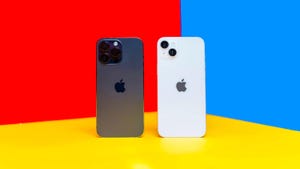
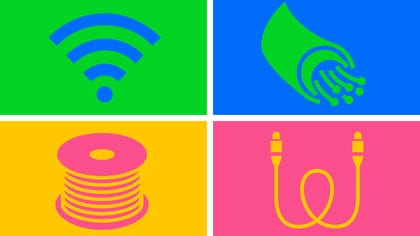
 <\/noscript><\/figure>\n ","topic":"","ttag":"","searchDim":"article-body|listicle|image","variant":"article-body|listicle|image","viewguid":"","event":"listicle|image|2","correlationId":"","_destCat":"https:\/\/www.apple.com\/shop\/buy-iphone\/iphone-14-pro","productName":"Apple iPhone 14 Pro (Space Black)","formatType":"IMAGE","location":"LIST","position":2,"sku":"CNETAPPLEIPHONE14PRO","dwLinkTag":"article-body|listicle|image","selector":"#article-body #listicle-0d1f3b98-6202-4942-8e92-2303ee1139dc .itemImage","shortcodeId":"0d1f3b98-6202-4942-8e92-2303ee1139dc","vendor":"Apple","manufacturer":"Apple","coupon":"","productPrice":"999","quantity":""}}” rel=”noopener nofollow” target=”_blank”>
<\/noscript><\/figure>\n ","topic":"","ttag":"","searchDim":"article-body|listicle|image","variant":"article-body|listicle|image","viewguid":"","event":"listicle|image|2","correlationId":"","_destCat":"https:\/\/www.apple.com\/shop\/buy-iphone\/iphone-14-pro","productName":"Apple iPhone 14 Pro (Space Black)","formatType":"IMAGE","location":"LIST","position":2,"sku":"CNETAPPLEIPHONE14PRO","dwLinkTag":"article-body|listicle|image","selector":"#article-body #listicle-0d1f3b98-6202-4942-8e92-2303ee1139dc .itemImage","shortcodeId":"0d1f3b98-6202-4942-8e92-2303ee1139dc","vendor":"Apple","manufacturer":"Apple","coupon":"","productPrice":"999","quantity":""}}” rel=”noopener nofollow” target=”_blank”>
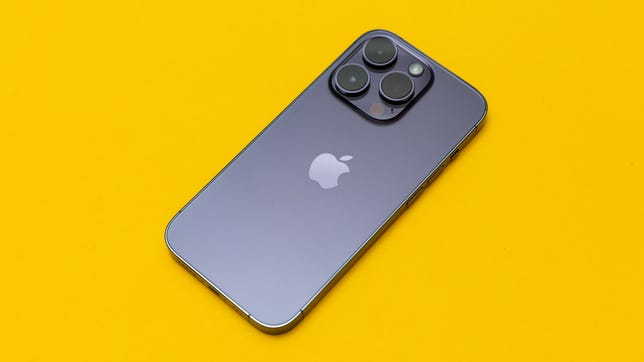
 <\/noscript><\/figure>\n ","topic":"","ttag":"","searchDim":"article-body|listicle|image","variant":"article-body|listicle|image","viewguid":"","event":"listicle|image|3","correlationId":"","_destCat":"https:\/\/www.apple.com\/shop\/buy-iphone\/iphone-13","productName":"iPhone 13","formatType":"IMAGE","location":"LIST","position":3,"sku":"","dwLinkTag":"article-body|listicle|image","selector":"#article-body #listicle-6babda98-d1c1-4203-bbc6-ee3b853002a3 .itemImage","shortcodeId":"6babda98-d1c1-4203-bbc6-ee3b853002a3","vendor":"Apple","manufacturer":"","coupon":"","productPrice":"729","quantity":""}}” rel=”noopener nofollow” target=”_blank”>
<\/noscript><\/figure>\n ","topic":"","ttag":"","searchDim":"article-body|listicle|image","variant":"article-body|listicle|image","viewguid":"","event":"listicle|image|3","correlationId":"","_destCat":"https:\/\/www.apple.com\/shop\/buy-iphone\/iphone-13","productName":"iPhone 13","formatType":"IMAGE","location":"LIST","position":3,"sku":"","dwLinkTag":"article-body|listicle|image","selector":"#article-body #listicle-6babda98-d1c1-4203-bbc6-ee3b853002a3 .itemImage","shortcodeId":"6babda98-d1c1-4203-bbc6-ee3b853002a3","vendor":"Apple","manufacturer":"","coupon":"","productPrice":"729","quantity":""}}” rel=”noopener nofollow” target=”_blank”>
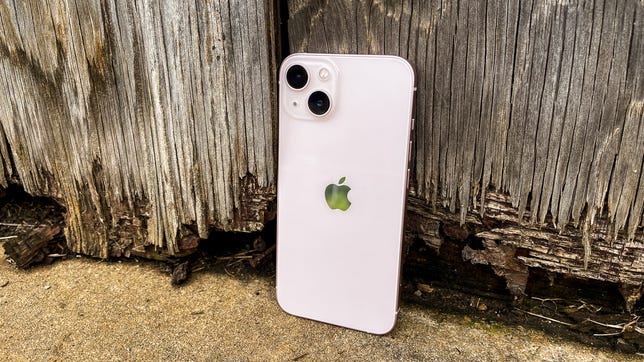
 <\/noscript><\/figure>\n ","topic":"","ttag":"","searchDim":"article-body|listicle|image","variant":"article-body|listicle|image","viewguid":"","event":"listicle|image|4","correlationId":"","_destCat":"https:\/\/www.apple.com\/shop\/buy-iphone\/iphone-14","productName":"Apple – iPhone 14 Plus 128GB – Purple (Sprint)","formatType":"IMAGE","location":"LIST","position":4,"sku":"MQ3U3LL\/A","dwLinkTag":"article-body|listicle|image","selector":"#article-body #listicle-b4564680-dd18-4f71-a722-3769d7d60d53 .itemImage","shortcodeId":"b4564680-dd18-4f71-a722-3769d7d60d53","vendor":"Apple","manufacturer":"Apple","coupon":"","productPrice":"929","quantity":""}}” rel=”noopener nofollow” target=”_blank”>
<\/noscript><\/figure>\n ","topic":"","ttag":"","searchDim":"article-body|listicle|image","variant":"article-body|listicle|image","viewguid":"","event":"listicle|image|4","correlationId":"","_destCat":"https:\/\/www.apple.com\/shop\/buy-iphone\/iphone-14","productName":"Apple – iPhone 14 Plus 128GB – Purple (Sprint)","formatType":"IMAGE","location":"LIST","position":4,"sku":"MQ3U3LL\/A","dwLinkTag":"article-body|listicle|image","selector":"#article-body #listicle-b4564680-dd18-4f71-a722-3769d7d60d53 .itemImage","shortcodeId":"b4564680-dd18-4f71-a722-3769d7d60d53","vendor":"Apple","manufacturer":"Apple","coupon":"","productPrice":"929","quantity":""}}” rel=”noopener nofollow” target=”_blank”>
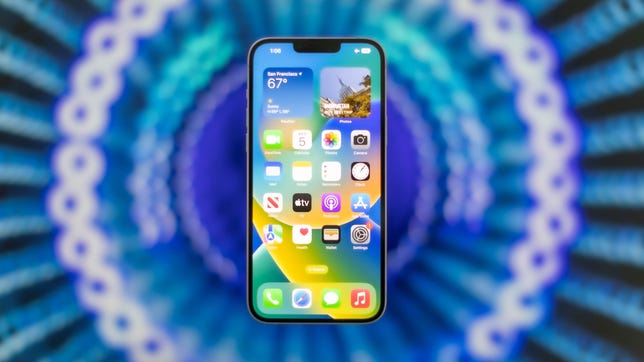
 <\/noscript><\/figure>\n ","topic":"","ttag":"","searchDim":"article-body|listicle|image","variant":"article-body|listicle|image","viewguid":"","event":"listicle|image|5","correlationId":"","_destCat":"https:\/\/www.apple.com\/shop\/buy-iphone\/iphone-13","productName":"iPhone 13 Mini","formatType":"IMAGE","location":"LIST","position":5,"sku":"","dwLinkTag":"article-body|listicle|image","selector":"#article-body #listicle-69562065-6ed5-48c5-855a-6deaecd4a8f3 .itemImage","shortcodeId":"69562065-6ed5-48c5-855a-6deaecd4a8f3","vendor":"Apple","manufacturer":"","coupon":"","productPrice":"629","quantity":""}}” rel=”noopener nofollow” target=”_blank”>
<\/noscript><\/figure>\n ","topic":"","ttag":"","searchDim":"article-body|listicle|image","variant":"article-body|listicle|image","viewguid":"","event":"listicle|image|5","correlationId":"","_destCat":"https:\/\/www.apple.com\/shop\/buy-iphone\/iphone-13","productName":"iPhone 13 Mini","formatType":"IMAGE","location":"LIST","position":5,"sku":"","dwLinkTag":"article-body|listicle|image","selector":"#article-body #listicle-69562065-6ed5-48c5-855a-6deaecd4a8f3 .itemImage","shortcodeId":"69562065-6ed5-48c5-855a-6deaecd4a8f3","vendor":"Apple","manufacturer":"","coupon":"","productPrice":"629","quantity":""}}” rel=”noopener nofollow” target=”_blank”>

 <\/noscript><\/figure>\n ","topic":"","ttag":"","searchDim":"article-body|listicle|image","variant":"article-body|listicle|image","viewguid":"","event":"listicle|image|6","correlationId":"","_destCat":"https:\/\/www.apple.com\/shop\/buy-iphone\/iphone-14-pro","productName":"iPhone 14 Pro Max","formatType":"IMAGE","location":"LIST","position":6,"sku":"","dwLinkTag":"article-body|listicle|image","selector":"#article-body #listicle-76419b54-6bba-48c1-9011-d6e9d6e9ba78 .itemImage","shortcodeId":"76419b54-6bba-48c1-9011-d6e9d6e9ba78","vendor":"Apple","manufacturer":"","coupon":"","productPrice":"1099","quantity":""}}” rel=”noopener nofollow” target=”_blank”>
<\/noscript><\/figure>\n ","topic":"","ttag":"","searchDim":"article-body|listicle|image","variant":"article-body|listicle|image","viewguid":"","event":"listicle|image|6","correlationId":"","_destCat":"https:\/\/www.apple.com\/shop\/buy-iphone\/iphone-14-pro","productName":"iPhone 14 Pro Max","formatType":"IMAGE","location":"LIST","position":6,"sku":"","dwLinkTag":"article-body|listicle|image","selector":"#article-body #listicle-76419b54-6bba-48c1-9011-d6e9d6e9ba78 .itemImage","shortcodeId":"76419b54-6bba-48c1-9011-d6e9d6e9ba78","vendor":"Apple","manufacturer":"","coupon":"","productPrice":"1099","quantity":""}}” rel=”noopener nofollow” target=”_blank”>
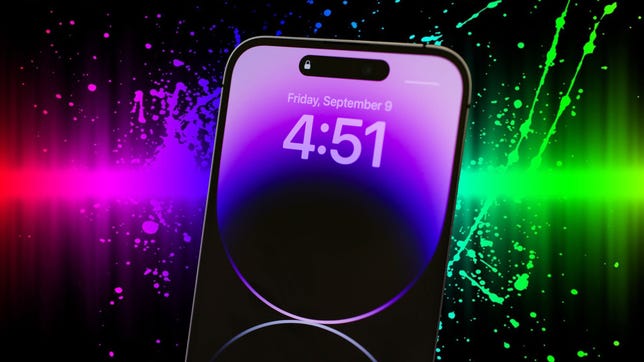
 <\/noscript><\/figure>\n ","topic":"","ttag":"","searchDim":"article-body|listicle|image","variant":"article-body|listicle|image","viewguid":"","event":"listicle|image|7","correlationId":"","_destCat":"https:\/\/www.apple.com\/shop\/buy-iphone\/iphone-12","productName":"iPhone 12","formatType":"IMAGE","location":"LIST","position":7,"sku":"","dwLinkTag":"article-body|listicle|image","selector":"#article-body #listicle-0202fe1c-3cf3-4c79-96a8-7417fdb07808 .itemImage","shortcodeId":"0202fe1c-3cf3-4c79-96a8-7417fdb07808","vendor":"Apple","manufacturer":"","coupon":"","productPrice":"629","quantity":""}}” rel=”noopener nofollow” target=”_blank”>
<\/noscript><\/figure>\n ","topic":"","ttag":"","searchDim":"article-body|listicle|image","variant":"article-body|listicle|image","viewguid":"","event":"listicle|image|7","correlationId":"","_destCat":"https:\/\/www.apple.com\/shop\/buy-iphone\/iphone-12","productName":"iPhone 12","formatType":"IMAGE","location":"LIST","position":7,"sku":"","dwLinkTag":"article-body|listicle|image","selector":"#article-body #listicle-0202fe1c-3cf3-4c79-96a8-7417fdb07808 .itemImage","shortcodeId":"0202fe1c-3cf3-4c79-96a8-7417fdb07808","vendor":"Apple","manufacturer":"","coupon":"","productPrice":"629","quantity":""}}” rel=”noopener nofollow” target=”_blank”>
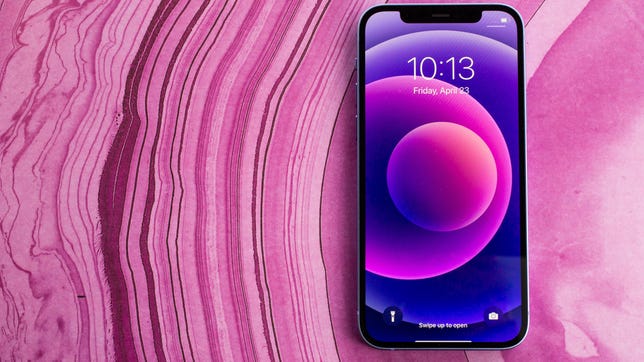
 <\/noscript><\/figure>\n ","topic":"","ttag":"","searchDim":"article-body|listicle|image","variant":"article-body|listicle|image","viewguid":"","event":"listicle|image|8","correlationId":"","_destCat":"https:\/\/www.apple.com\/shop\/buy-iphone\/iphone-se","productName":"iPhone SE","formatType":"IMAGE","location":"LIST","position":8,"sku":"","dwLinkTag":"article-body|listicle|image","selector":"#article-body #listicle-b9744be7-f5bd-4dc7-b846-a5477bbd2e2c .itemImage","shortcodeId":"b9744be7-f5bd-4dc7-b846-a5477bbd2e2c","vendor":"Apple","manufacturer":"","coupon":"","productPrice":"429","quantity":""}}” rel=”noopener nofollow” target=”_blank”>
<\/noscript><\/figure>\n ","topic":"","ttag":"","searchDim":"article-body|listicle|image","variant":"article-body|listicle|image","viewguid":"","event":"listicle|image|8","correlationId":"","_destCat":"https:\/\/www.apple.com\/shop\/buy-iphone\/iphone-se","productName":"iPhone SE","formatType":"IMAGE","location":"LIST","position":8,"sku":"","dwLinkTag":"article-body|listicle|image","selector":"#article-body #listicle-b9744be7-f5bd-4dc7-b846-a5477bbd2e2c .itemImage","shortcodeId":"b9744be7-f5bd-4dc7-b846-a5477bbd2e2c","vendor":"Apple","manufacturer":"","coupon":"","productPrice":"429","quantity":""}}” rel=”noopener nofollow” target=”_blank”>
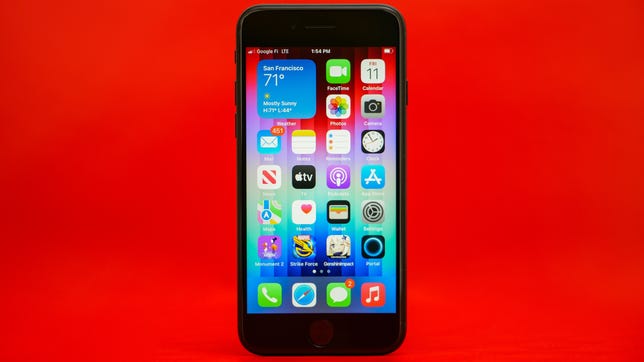
0 Comments